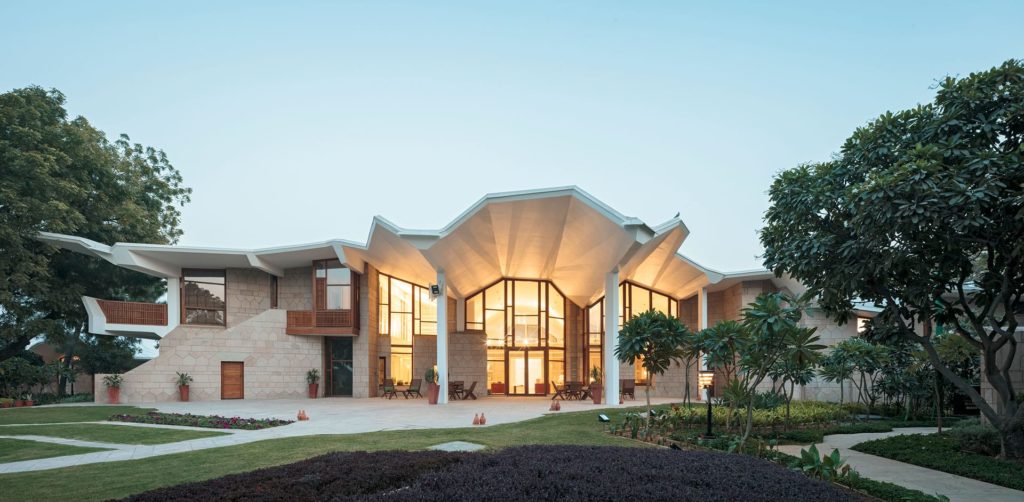
Reima and Raili Pietilä won the design competition for the Finnish Embassy to be located in the diplomatic enclave in Chanakyapuri, New Delhi in 1963 with a beautiful and powerful competition entry called “Snow speaks on the mountains”. After a lengthy delay, the project was commissioned in 1980 and redesigned based on the original concept. The Embassy finally opened in 1986 with the large single expanse of roof of the 1960’s design broken up into six separate lateral buildings. The sculptural roofs - the most significant architectural feature of the embassy compound - resemble the forms of the snowy Lake Kitkajärvi near Kuusamo, Northern Finland. The facades are made of locally manufactured natural sandstone tiles, white plastered bricks, white painted concrete and oiled teak.

Today, the embassy compound comprises the Ambassador’s residence, the chancery, visa and consular services, the office of Business Finland, staff apartments, and a Finnish sauna around a large central garden area.
The renovation project completed in 2018 of has brought this masterpiece of Finnish modernism back to its original glory. The project consisted of a complete overhaul of technical systems, some functional updates and modifications, the construction of new entrance gates and a gazebo, as well as architectural works focusing on restoring the original spirit of the design and repairing earlier misguided maintenance efforts both indoors and outdoors. The new gatehouses were built by forming inward niches into the original compound walls. This solution was chosen to create a discreet but clearly independent architectural addition, and to not interfere with the original architecture inside the compound.
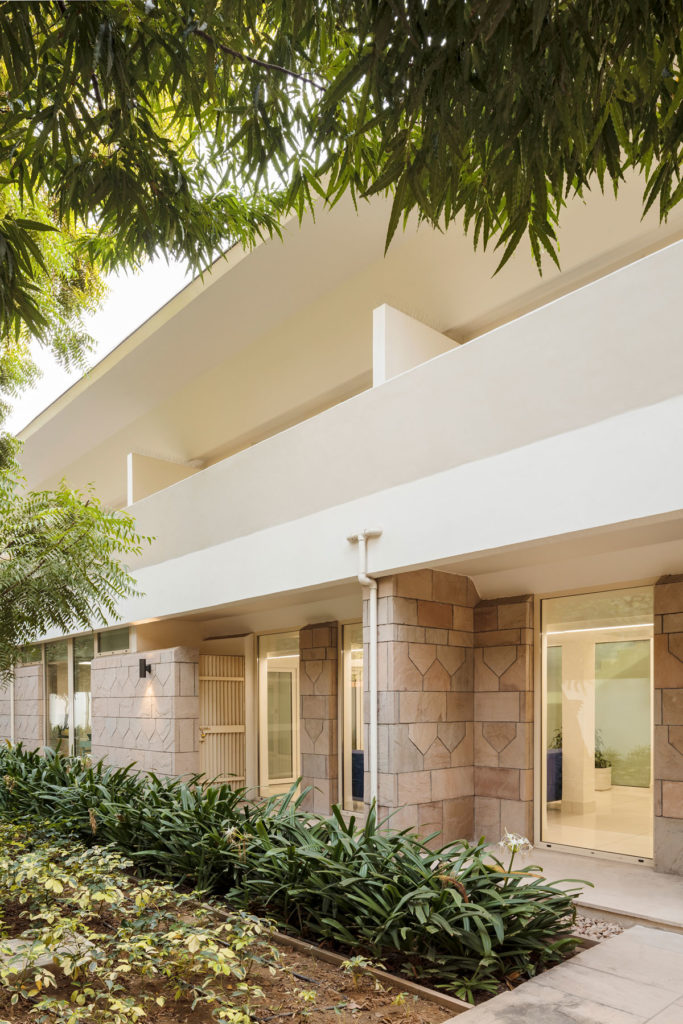
Renovation Project
ALA Architects was commissioned in 2013 to design the renovation of the embassy compound. The project was divided into two phases and took just over five years to complete. The first phase consisted of the transformation of one staff apartment building and the construction of one new gate house. The second phase comprised the renovations of the chancery, the ambassador’s residence, the technical center, sauna, two more residential buildings, the pool and one gate house, and the construction of the second new gate house and a gazebo. The aims of the project were to revamp the existing reception and office facilities, and to improve the occupational well-being and living conditions of the staff members, the overall safety, as well as the energy efficiency and functionality of the buildings, also taking into account the harsh climate conditions and the alarming level of air pollution.

The most notable changes to the original design are the transformation of one staff apartment building containing several small apartments into contemporary office facilities and a few larger apartments, and the demolition of a wall separating one of the buildings from the rest of the complex to better follow the Pietiläs’ original idea about a united spatial mass. Other modifications within the compound’s existing buildings included the construction of a staff dining room and other staff facilities for the local employees. The change that is the most visible from the street is the addition of two new gate houses outside the compound wall, and the heightening of the wall itself. The only addition inside the embassy compound is a new gazebo housing a small gym next to the outdoor pool.

Interior design
The original interior design is by the Finnish interior architect Antti Nurmesniemi. His team was also responsible for the design of the Embassy’s custom furniture, custom lighting fixtures and large woolen area rugs, and for the further development of Reima Pietilä’s sketches for fixed furnishings. Most of the other furniture was selected from the Finnish furniture manufacturer Artek’s catalogue.
In the renovation project the original wardrobes and the sauna furniture were repaired and the remaining original loose furniture reupholstered and treated to reflect their original design. Photos from the 1980s were used to define the correct colors and materials in both refurbished and new furniture, textiles and rugs.
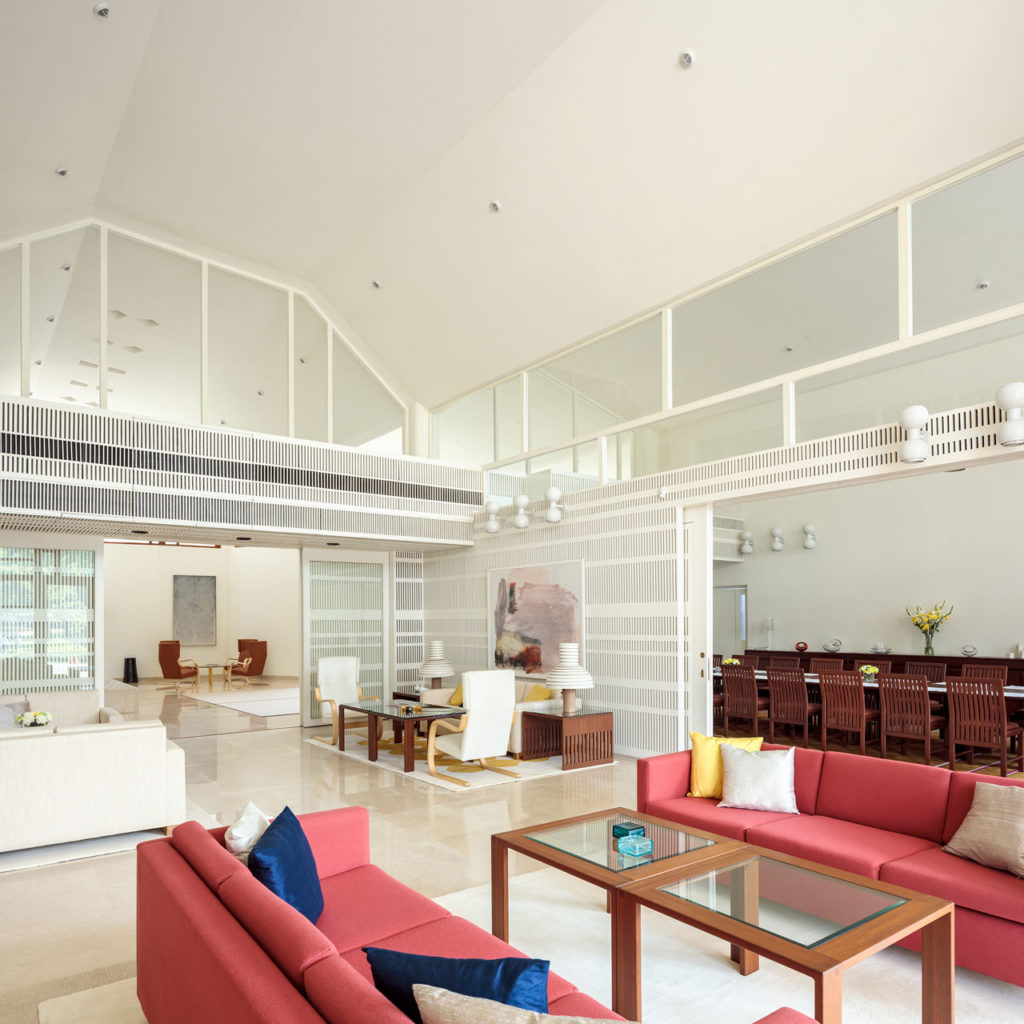
The rooms used for representation were carefully restored including their furniture, whereas the spaces with modified uses, also gained a new layer of contemporary furniture.
The original design also includes a large ceramic indoor bas-relief and water feature titled “Spring in the North” by the Finnish ceramic artist Rut Bryk.
Landscape design
The original landscaping and the design of the garden are by the Pietiläs’ longtime collaborator, the Finnish landscape architect Maj-Lis Rosenbröijer. As part of the renovation project the somewhat dilapidated yard areas were thoroughly refurbished following Rosenbröijer’s original idea. Some climate-specific updates were made to the plant selection and slight safety-requirement-based improvements were made to the paths crossing the compound. The installation of new irrigation and stormwater management systems also required some gradient changes.
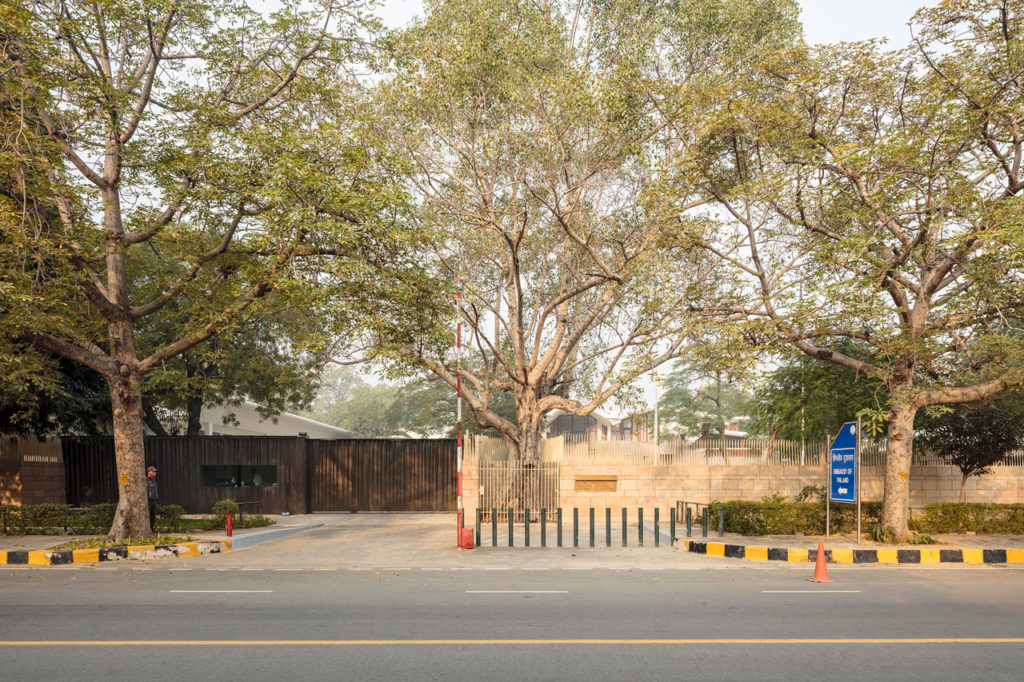
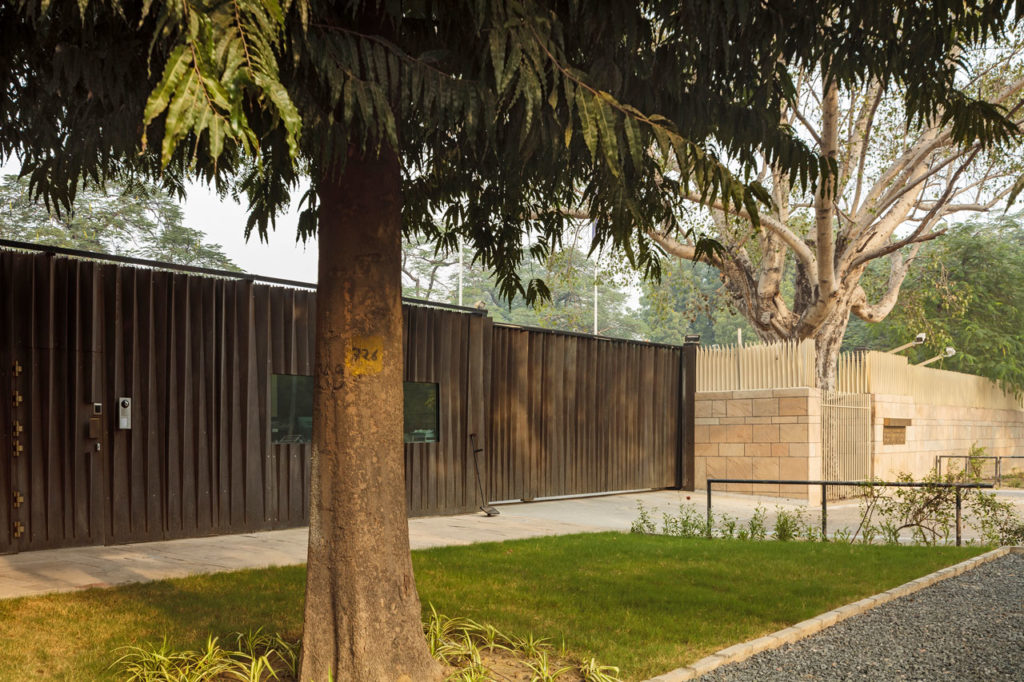
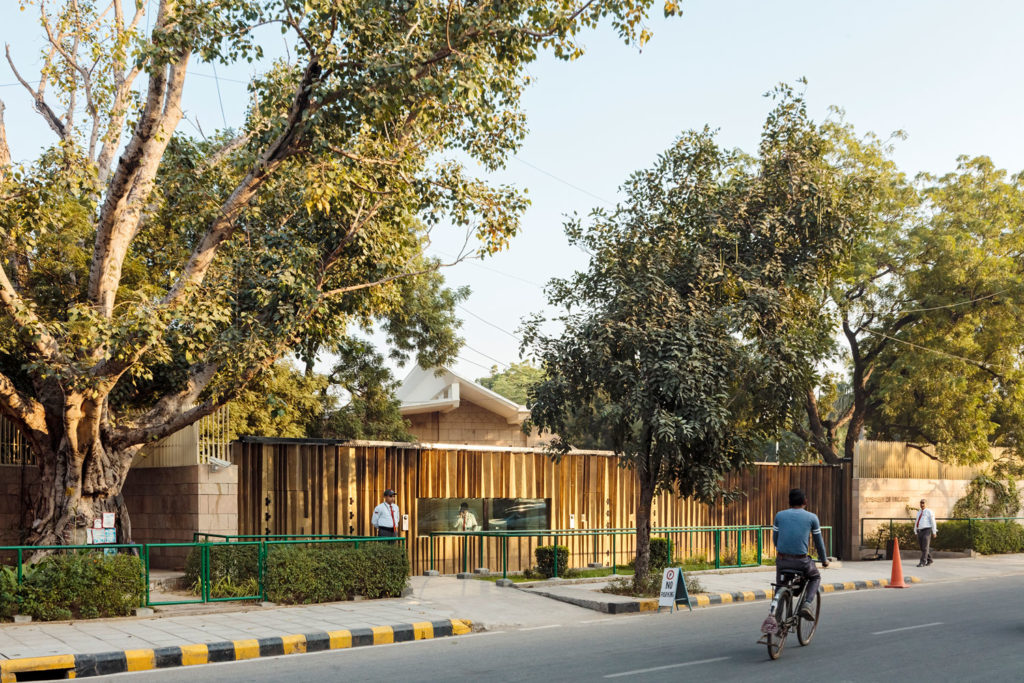


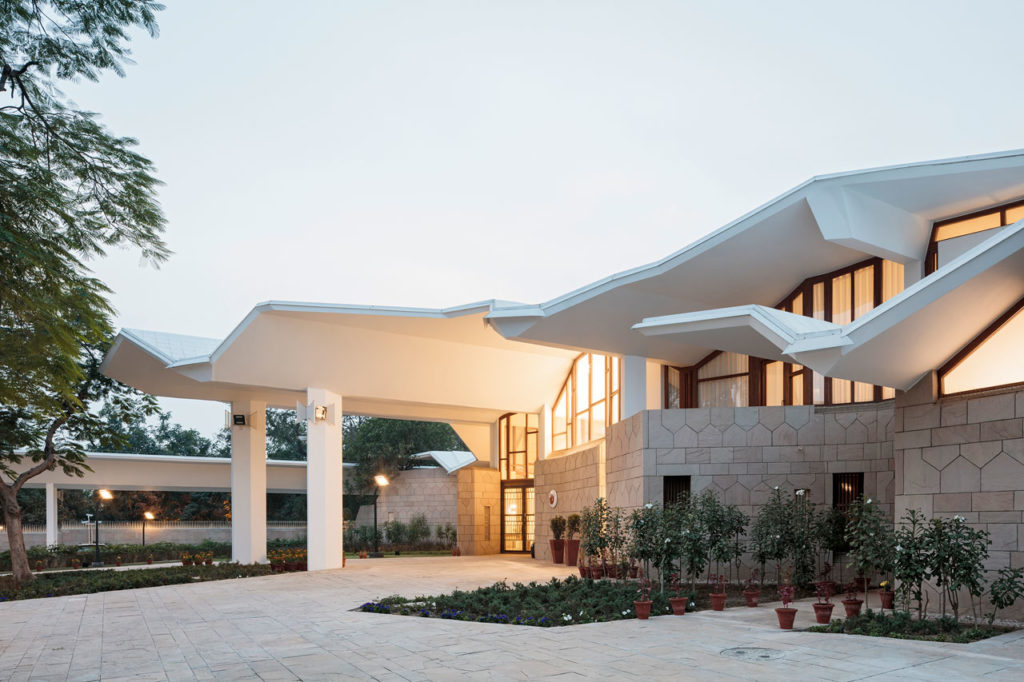
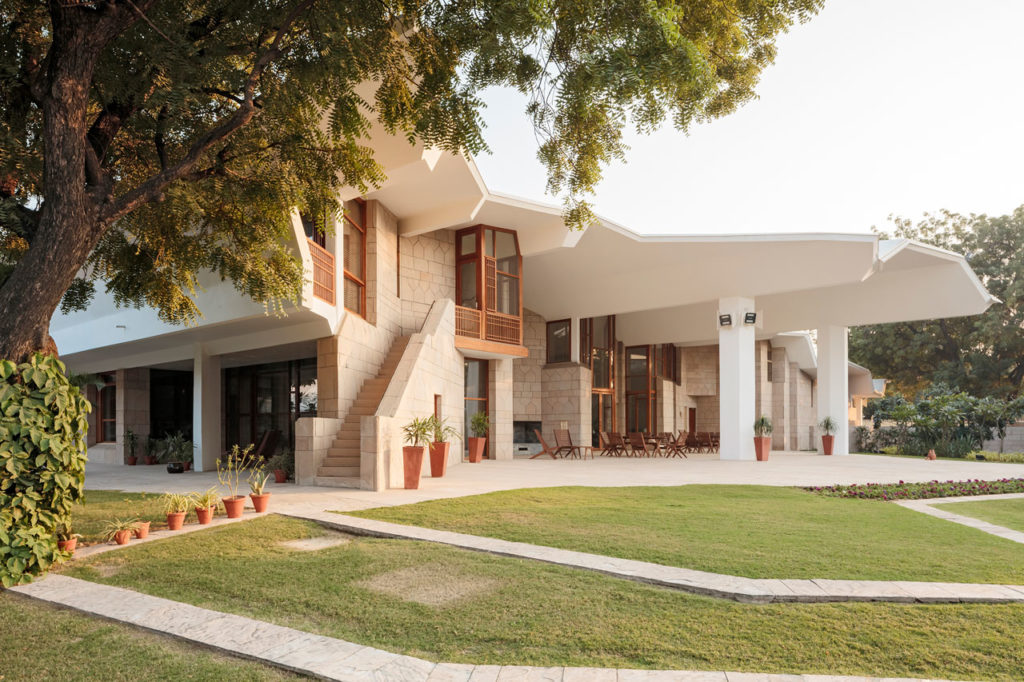


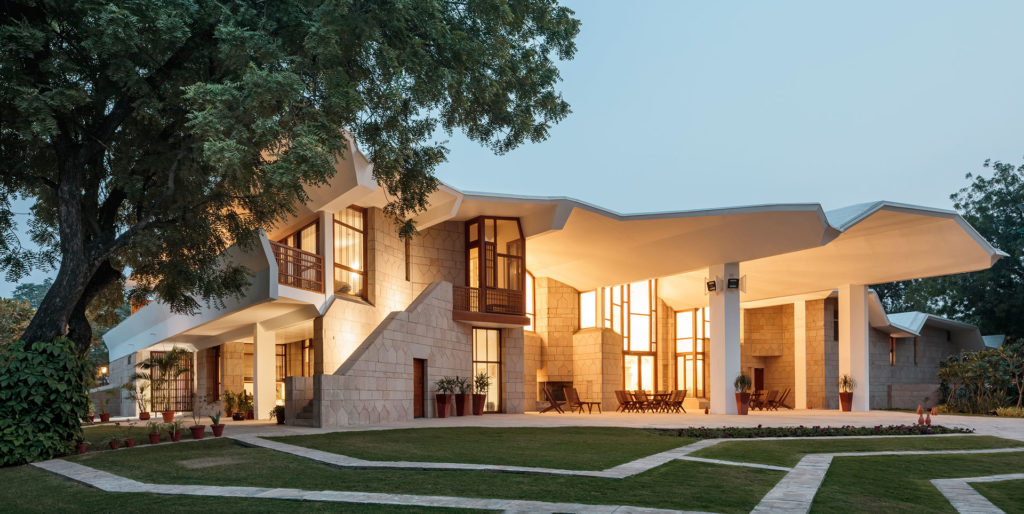
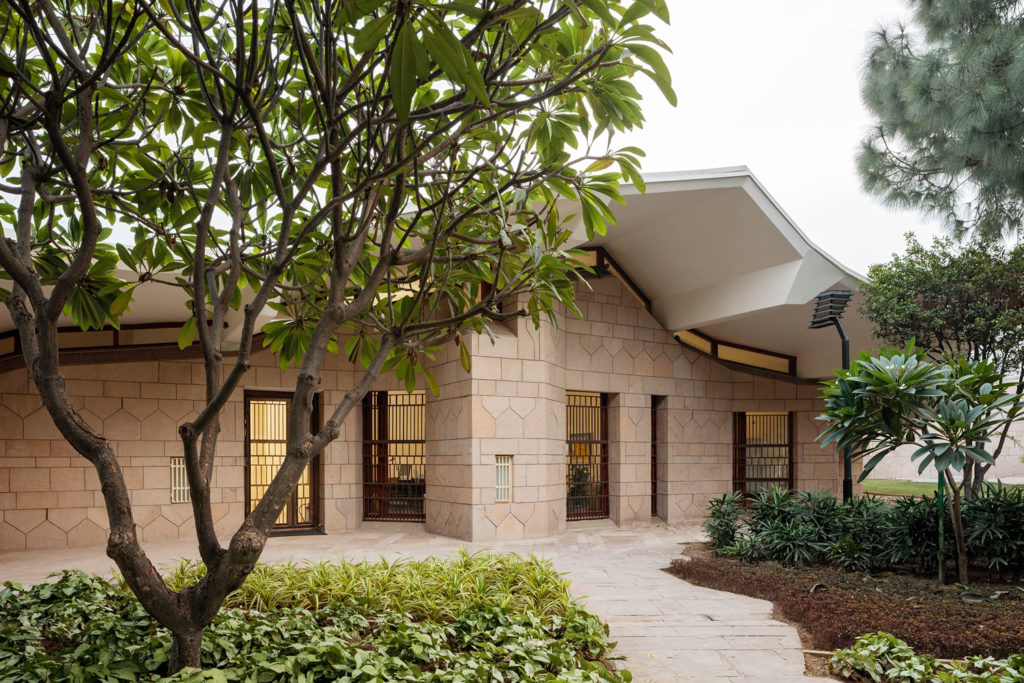
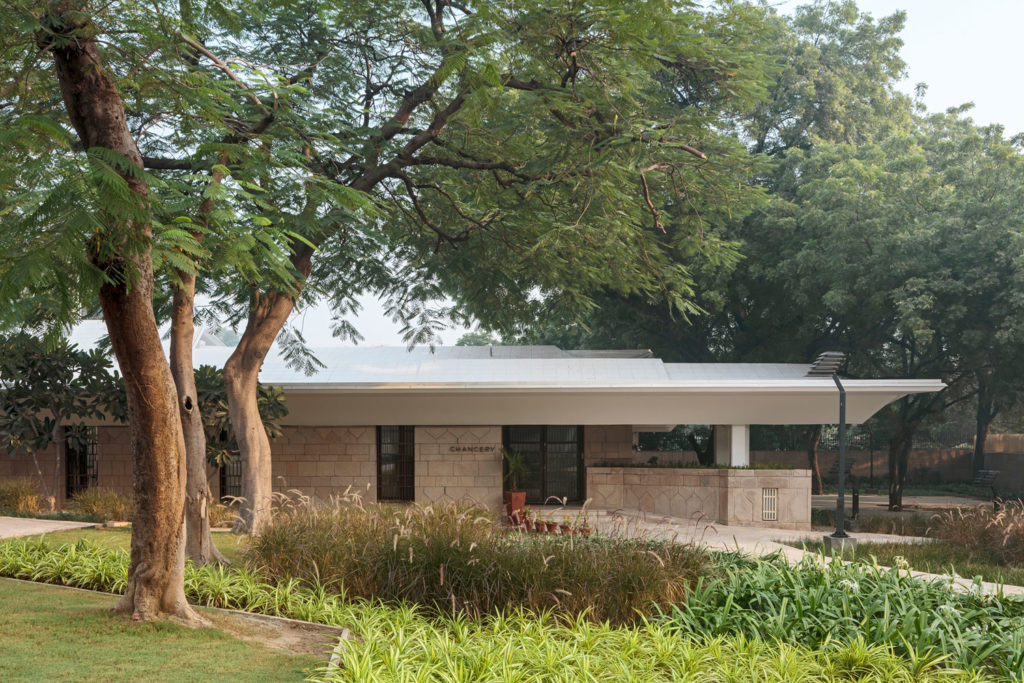
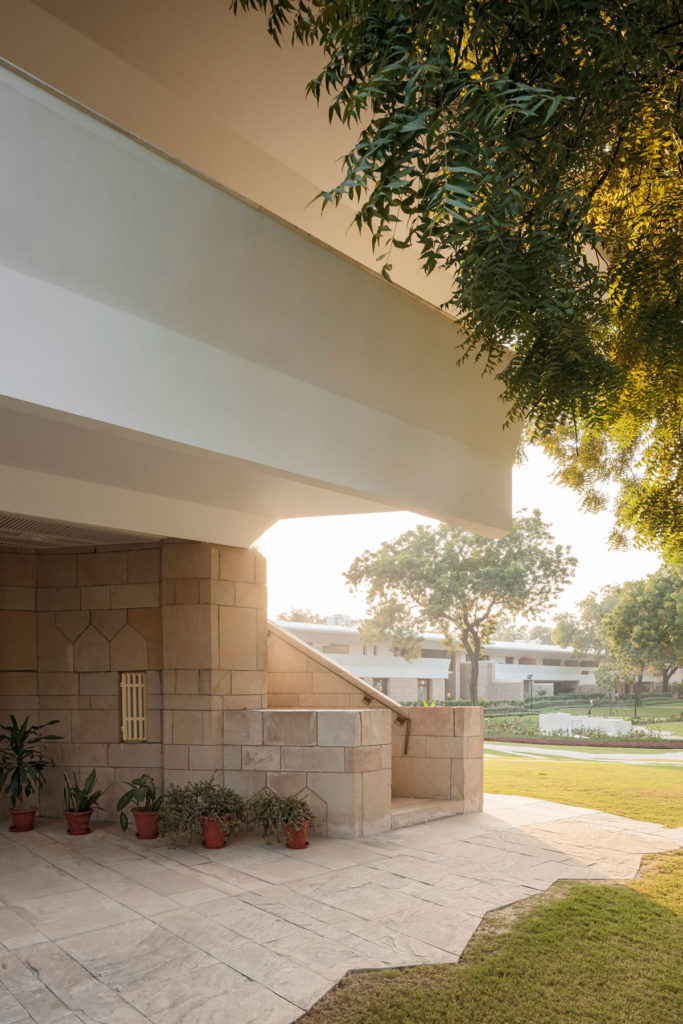
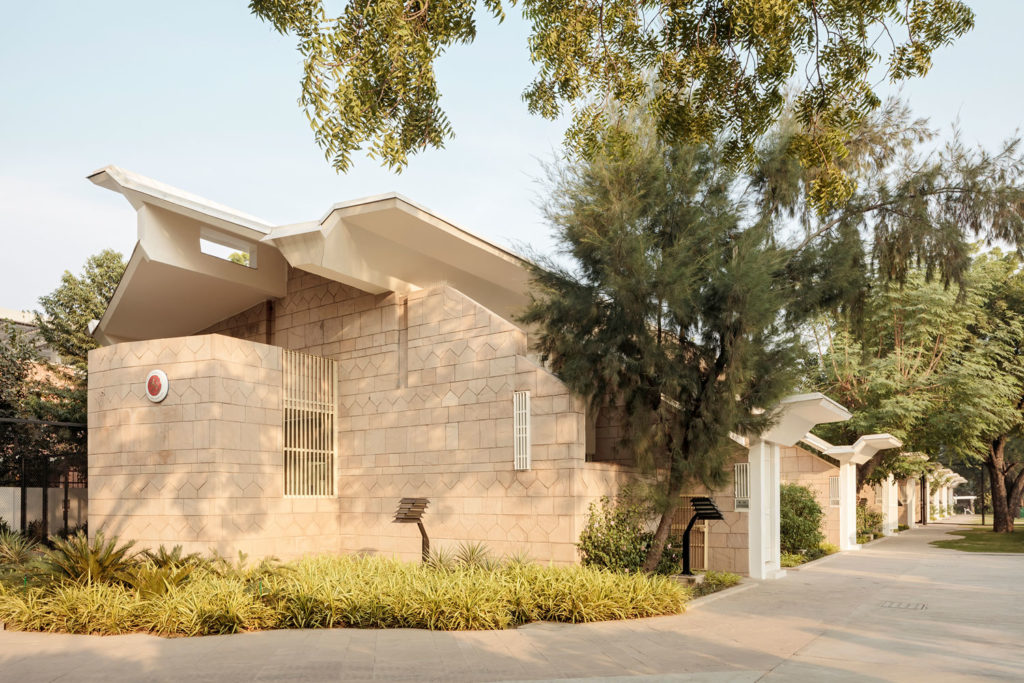

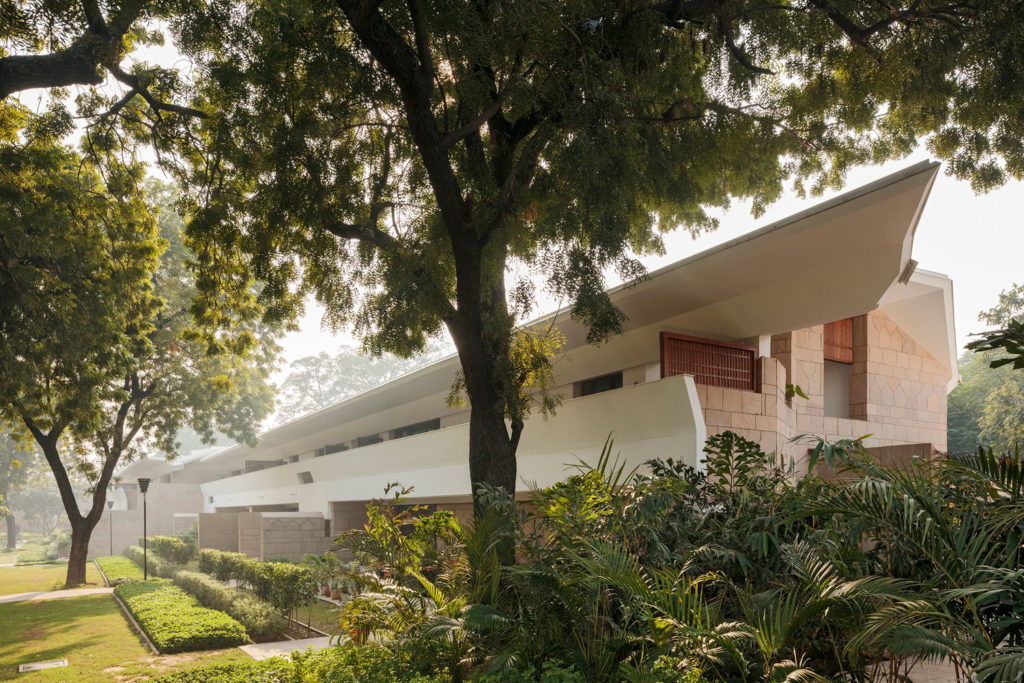
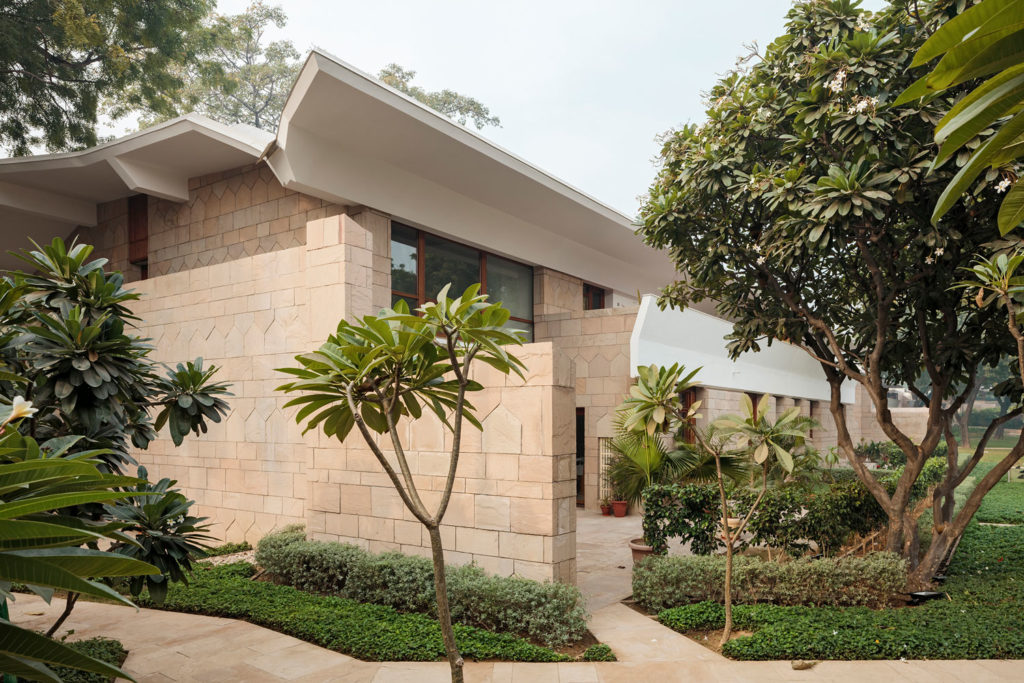
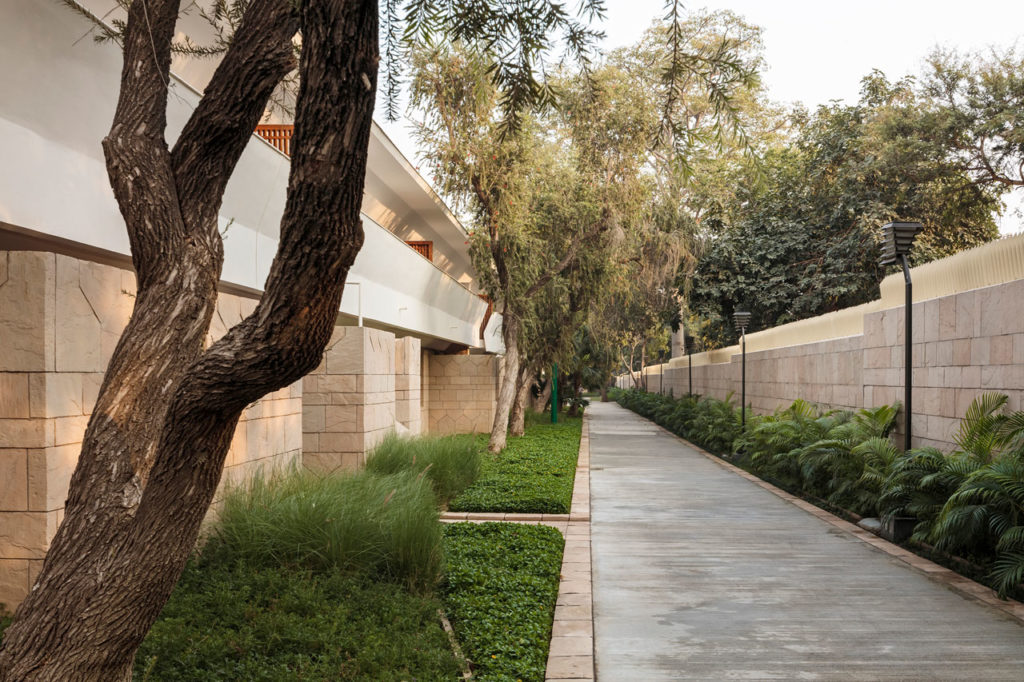


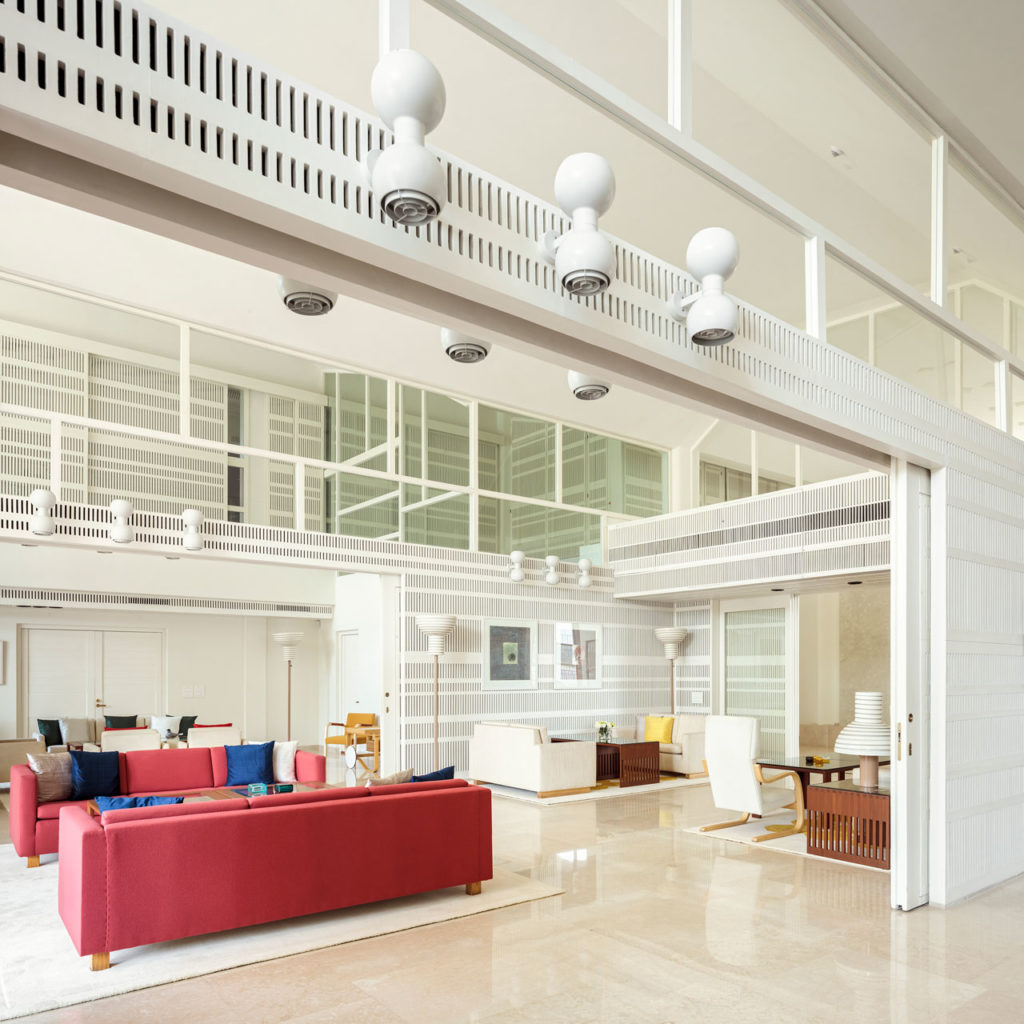

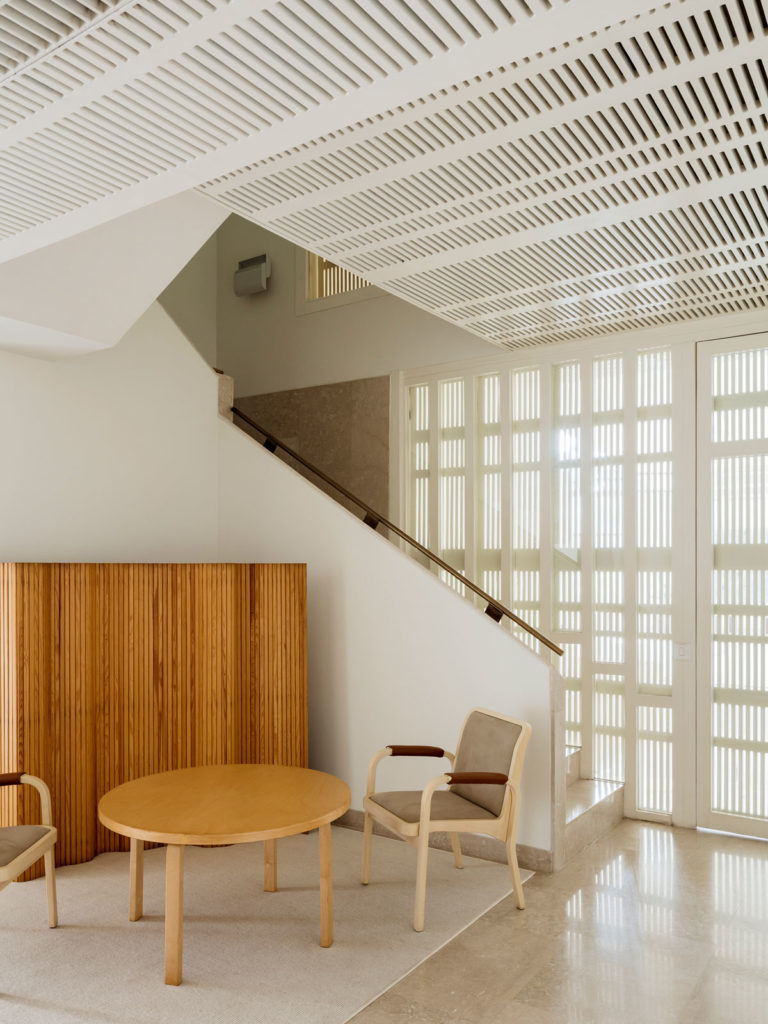

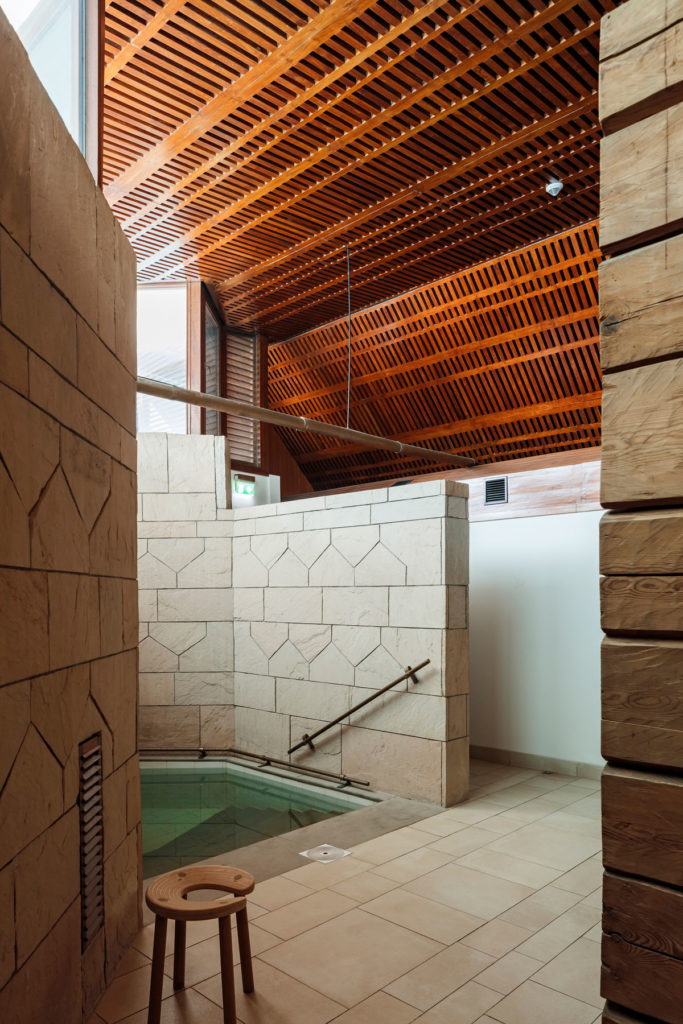
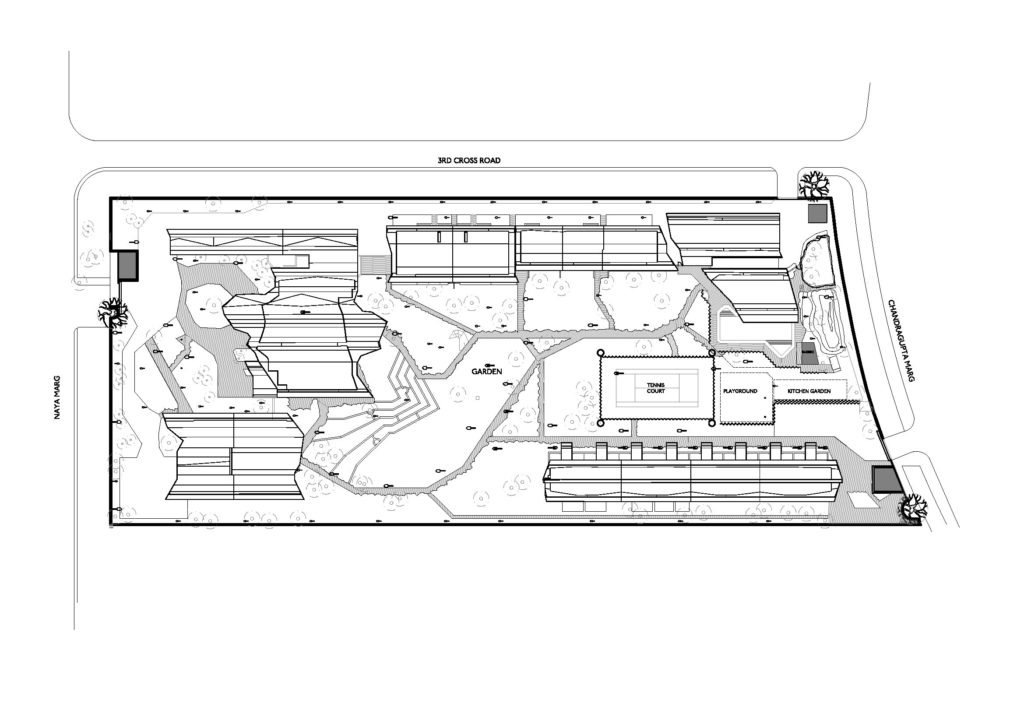
Credits:
Program: Restauration and renovation of the existing buildings: chancery, ambassador’s residence, staff apartments, consular office, technical building, sauna and gate house, and two new gate houses and a gazebo, 4,400 m2 gross total
Sustainability rating: LEED Gold
Client: Ministry for Foreign Affairs, Finland
Collaborators: SCG Contracts India Pvt. Ltd. (main contractor), Sitowise (engineering), WSP Finland (project management), Annukka Pietilä (building inventory and specialist on the architecture of Raili and Reima Pietilä), C. P. Kukreja Architects (local architect partner), Jasleen Waraich Landscape Architecture (consulting landscape architect for the renovation)
Original design: Raili and Reima Pietilä Architects, competition win 1963, completion of the modified design 1986
comments